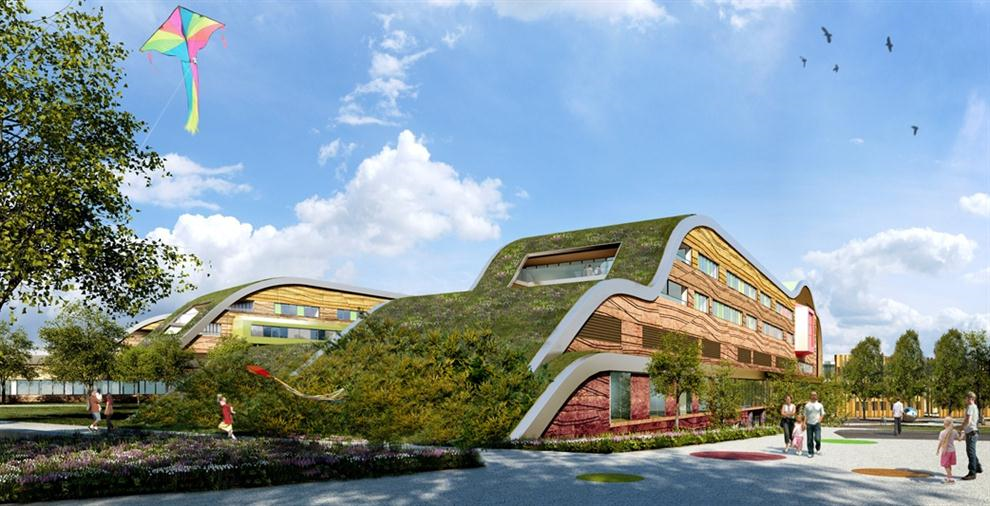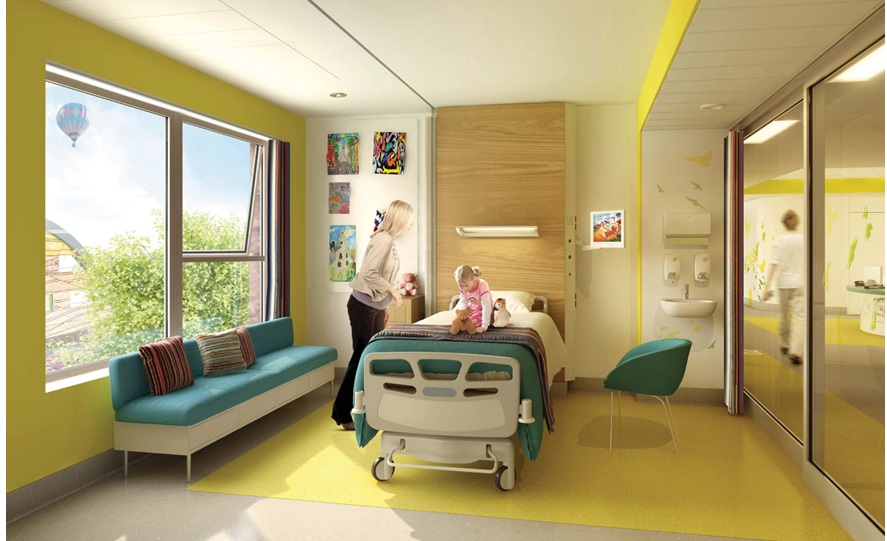Alder Hey Hospital PPP, UK

The Alder Hey Children's Hospital PPP project to be built in Liverpool in the UK is one of the key social infrastructure healthcare projects for the country. While it's procurement, like most other recent social infrastructure deals in the UK, has been long drawn requiring several government assessments and approvals - its eventual financial close has set a good precedent for future deals to follow.
The project took about two years from tender till financial close, mostly because of the UK government's wider value for money assesments that were applied to most PFI projects between 2010-2012. The project's business case finally received regulatory approval from Monitor - an independent regulator for NHS foundation trusts - at the begining of 2012, a few months ahead of preferred bidder announcement. Financial close was reached a year later in March 2013.
The project's design has been structured in consultation with patients and their families, the Prince's Foundation and National Arts for Health, developer John Laing informs. Once rebuilt, the hospital will be the UK's first children’s hospital in a park in the aiming of giving its patients, their families and the Trust's staff a healthy environment. The unique design by architects BDP will integrate the hospital with Springfield Park, ensuring that the majority of bedrooms have natural views and easy access to the park. Wards have access to play decks so that children who cannot leave the ward can benefit from outdoor space.
Project Scope
As a specialist hospital, Alder Hey is understood to be one of Europe’s biggest and busiest children’s hospitals with a "national and international reputation" as a Centre of Excellence for children with cancer, heart, spinal and brain disease. However, the hospital was in need of immediate redevelopment since it has been providing services in buildings which are almost 100 years old and not fit for providing modern day services.
The PPP contract involves construction and maintenance of a brand new children's hospital in Liverpool and constitutes the first phase of the replacement of the existing hospital. Once the new building is constructed the existing Alder Hey facility will be demolished and turned into a park for the nearby community. Being one of the largest specialist children's healthcare providers in Western Europe, Alder Hey Hospital delivers a wide range of services to Liverpool and the wider north west region of England.
A consortium comprising John Laing, Laing O'Rourke and Interserve was chosen preferred bidder over rival team led by Balfour Beatty for the project in May 2012. John Laing and Laing O’Rourke will each hold 40 per cent of the total investment equity in the project with Interserve holding 20 per cent. Laing O’Rourke Construction will design and build the new hospital and Interserve will maintain the hospital infrastructure.

The new hospital will have a floor area of 51,000m2 with 270 beds, including 48 critical care beds for patients in ICU, HDU and Burns. There will be six standard wards with 32 beds. Each ward will have two four-bed bays and 24 single rooms on each ward. There will also be 16 operating theatres, four for day-case surgery and 12 inpatient theatres. The new development will also include a multi-storey car park with 1,200 spaces, 200 more than the current site. 75 per cent of rooms will be single-bed occupancy with en-suite facilities.
The official opening of the new hospital is planned for Autumn 2015.
Financing
The significance of the financing arrangements for Alder Hey lies not in the volume of debt, which at £121.5 million or 90 per cent of the total capital structure was relatively modest in project finance terms, but in the identity of the principal lender, the maturity on which they lent and how it was structured in order to suit their risk tolerance.
For the last two years there has been much talk of institutional investors stepping in as direct lenders to infrastructure developments but little in way of concrete deals. In this transaction, M&G, the asset management arm of insurance group Prudential, slipped into the bankers’ shoes by providing two separate tranches of debt. Account managing the deal was SMBC, which though not providing any debt handled the structuring. Alongside the insurers’ portion was an almost equal tranche courtesy of the European Investment Bank.
That £121.5 million is understood to be split as:
- M&G - £55 million (Tranche 1) and £12 million (Tranche 2)
- EIB - £54.5 million
The project's debt to equity ratio stands at the 90:10 and a proportion of the scheme is also being funded by the Trust’s own financial resources alongside charitable donations.
Pricing and credit enhancement
M&G's first tranche is priced at 210 bps over the 2033 guilt and the second tranche is five per cent over that, while EIB's tranche is priced lower than that according to a source familiar with the deal. The debt covers the full tenor of the project which is likely to be around 25 years and the fund model is said to be similar to the employed by Aviva on recent social infrastructure accommodation deals.
One industry source suggests that M&G’s bigger tranche was senior debt and that the smaller, more expensive tranche a subordinated piece, designed to credit enhance the senior debt. It is thought that the two pieces were provided through separate funds.
Competition and repercussions
The procuring authority said they found the M&G pricing model to be the most attractive of all solutions presented during the funding competition. Considering that there were a number of models in contention – “six or seven” according to one source, including traditional bank funding, a construction wrap designed for an institutional investor, a monoline wrap for the entire maturity and another mezzanine tranche offering credit enhancement – M&G’s success may bode well for institutional debt participation in publicly-procured project in future.
For many debt fund managers and banks attempting to make this a reality a constant refrain is that confidence will grow once deals are done, although it has proven to be something of a chicken-and-egg situation.
Big insurance companies may prick their ears up at the news, says one industry source, adding that institutional debt packages are likely to figure among bids for the Royal Liverpool University Hospital’s funding.
The Alder Hey deal does not necessarily mean that similar deals will immediately follow. The same industry insider observes that the dearth of straight-forward social infrastructure projects currently in procurement narrows the range of targets fitting the risk tolerance of institutional players. However with investors like Aviva and M&G finally leading the financing race, the hope is that banks will not have to bear all the project financing burden alone.
Advisory Roles
Deloitte provided financial advice to the authority, with Bevan Brittan giving legal counsel while Couch Perry & Wilkes acted as technical adviser. JCRA provided advice on the derivatives exposure.
For the sponsors, financial advice was provided by PwC while CMS Cameron McKenna acted on the legal side.
For the lenders legal advice was provided by Linklaters.
Request a Demo
Interested in IJGlobal? Request a demo to discuss a trial with a member of our team. Talk to the team to explore the value of our asset and transaction databases, our market-leading news, league tables and much more.